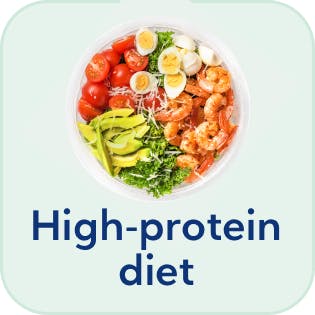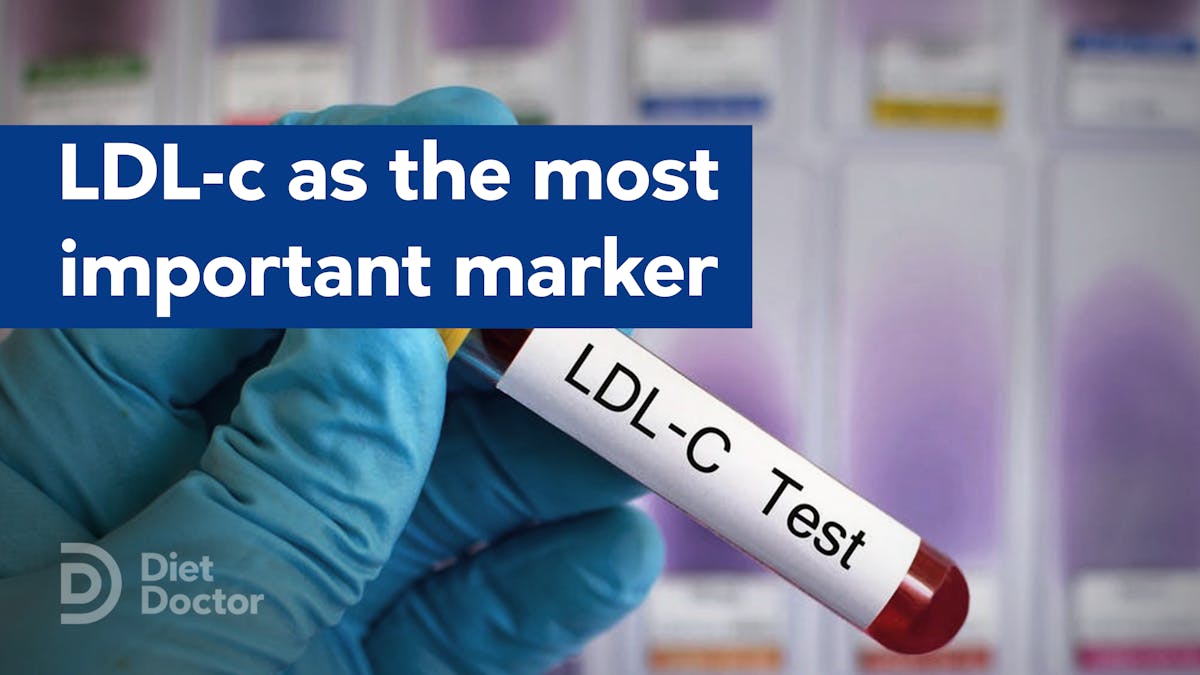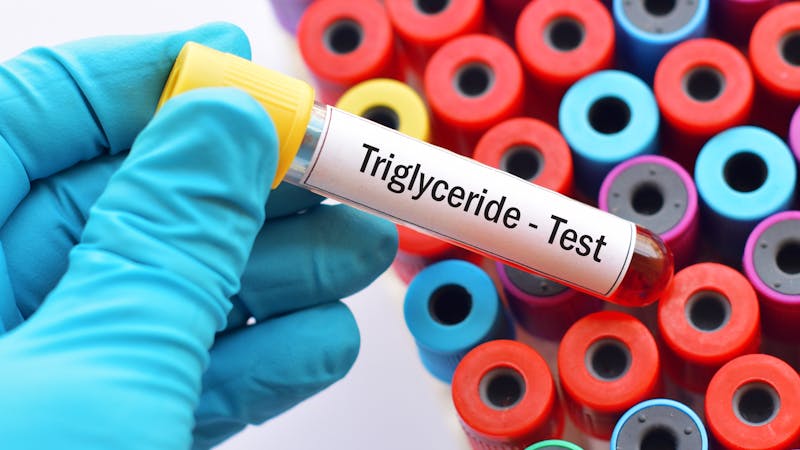What is cholesterol?
Cholesterol is an essential component of our bodies. Although there are convincing data showing an association between having high blood-cholesterol levels and increased cardiovascular risk, it is not clear that elevated cholesterol always equates with increased cardiovascular risk for everyone.
This guide will explain the basics of cholesterol and the different subtypes. To keep things brief, we’ll present most of the information about the different particles in bulleted lists.
You can learn more in our evidence-based guides about whether elevated LDL cholesterol is harmful, cholesterol and low carb diets, and the specific situation of low-carb LDL hyper-responders.


The basics: What is cholesterol?
- Cholesterol is a waxy substance that is essential for the life of all animals, including humans.1
- Your body needs cholesterol for cell-membrane integrity, hormone synthesis, creation of bile acids, and myelin formation (myelin is the material that coats specialized nerve cells).2
- Your body makes most of the cholesterol that circulates in your bloodstream. It’s primarily produced in the liver, although many other tissues can make small amounts of cholesterol.
- Dietary cholesterol makes up a smaller portion of your blood-cholesterol pool and has only a minor effect on blood levels.3
How is cholesterol transported in your body?
Since cholesterol is a wax-like substance, it can’t dissolve in the blood. Think about what happens when you add oil to water — it doesn’t mix. Your body has different carriers, called lipoproteins, which shuttle cholesterol through your bloodstream.
The main lipoproteins are
- very-low-density lipoprotein (VLDL)
- high-density lipoprotein (HDL)
- low-density lipoprotein (LDL)
Triglycerides are commonly discussed along with cholesterol, but technically triglycerides aren’t cholesterol. Rather, triglycerides are the body’s form of mobile fat energy, providing energy to tissues when necessary and moving excess energy to fat storage when energy is abundant. In this guide, we’ll start with triglycerides and then move on to discuss the lipoproteins.
Triglycerides
- Triglycerides are a type of fat that your body can either use for energy or store in fat cells for later use.
- Lipoproteins transport triglycerides in the blood, packaged along with cholesterol. Triglycerides are more prevalent in remnant particles such as VLDL, and less prevalent in LDL and HDL.
- Elevated triglycerides are likely independently associated with increased cardiovascular risk.4
- Some medications can lower triglycerides, such as fibrates, fish oil, and niacin.
- Your body can make triglycerides from dietary fat but often makes them to store excess carbohydrate intake.5
- One of the best lifestyle interventions for lowering triglycerides is following a low-carb diet.6
- The standard target for triglycerides is less than 150 mg/dL (1.7 mmol/L), but there is still a lot unknown about ideal triglyceride levels.7 Many clinicians familiar with low-carb nutrition believe levels below 100 mg/dL (1.1 mmol/L), or even 70 mg/dL (0.8mmol/L), may be better targets.8
- Another helpful target is to have a triglyceride to HDL ratio below 1.5.9
- Our guide, How to lower triglycerides, has helpful tips for bringing your levels down.
Very-low-density lipoprotein (VLDL)
- The liver makes VLDL particles with a high concentration of triglycerides and a much lower concentration of cholesterol.
- VLDL particles transport triglycerides to tissues for fuel or for storage. VLDLs transition to intermediate-density lipoprotein (IDL) and eventually LDL as they drop off their triglyceride cargo.
- VLDL and other triglyceride-rich — sometimes called “remnant” — particles can contribute to cardiovascular disease, and some studies show them to be a more significant risk factor than LDL.10
- The diseases of insulin resistance, such as metabolic syndrome and type 2 diabetes, often come with elevated VLDL.11
- Low-carb nutrition effectively lowers VLDL levels.12
- Target VLDL levels have not been well studied but are frequently listed as less than 30 mg/dl (1.7 mmol/L).
High-density lipoprotein (HDL)
- HDL has long been considered the “good cholesterol,” but this is an oversimplification.
- The concept of HDL being “good” comes from two main lines of evidence: 13
- There is a strong association between low HDL and the risk of heart disease. In fact, low HDL may be a more significant risk factor for heart disease than elevated LDL.14
- HDL transports cholesterol to the liver, effectively removing it from circulation.
- However, attempts to raise HDL with medications have not shown clinical benefit, and genetically-elevated HDL is not always associated with decreased heart risk.15 These findings call into question whether HDL is “good” or simply a marker of metabolic health. They also highlight the potential importance of HDL function, which is currently difficult to measure clinically.
- Based on the evidence, it’s clear that you want to avoid having low HDL or the metabolic conditions that are associated with low HDL.
- While raising HDL with medications may not improve overall health outcomes, raising it naturally through diet and lifestyle may.16 The lifestyle habits that raise HDL are usually the same ones that improve insulin resistance and metabolic disease. Medications for HDL, on the other hand, have no metabolic benefits.
- Low-carb nutrition and strenuous exercise are likely the two most beneficial lifestyle habits for raising HDL.17
- Alcohol consumption may also raise HDL but is less likely to produce metabolic benefits.
- Men should aim for an HDL above 40 mg/dL (1.0 mmol/L), and women should aim for an HDL above 50 mg/dL (1.3 mmol/L).
Low-density lipoprotein (LDL)
- Observational studies and longitudinal intervention studies show an association between elevated LDL cholesterol and an increased risk of developing cardiovascular disease.18 This association is true of studies in the general population and those done in people with specific genetic mutations that increase LDL levels.19
- Medical societies recommend lowering LDL cholesterol to reduce heart-disease risk, and cholesterol-lowering medications are among the most widely-prescribed medications in the industrialized world.20
- Many medical societies agree that LDL is causative of heart disease.21
- An alternative idea is that LDL is necessary for the development of atherosclerosis but not causative in the absence of other factors that can cause vascular injury.22
- Elevated LDL may not have equal risk across all subgroups. For instance, those with high HDL and low triglycerides may have less risk.23
- Not all LDL particles are the same. See below for a more detailed description of the main kinds.
- Goal levels of LDL are usually based on the presence or absence of other cardiac risk factors. However, the American College of Cardiology (ACC) recommends less than 70 mg/dL for people with heart disease or at very-high risk for heart disease.
ApoB and LDL-P
- LDL-P is a direct count of the number of LDL particles in blood, usually expressed as nmol/L.
- Apolipoprotein B (ApoB) is a protein present on every LDL lipoprotein — as well as VLDL and IDL particles, and LDL variants like Lp(a). An ApoB test is a measure of the amount of ApoB protein in a set amount of blood, reported in mg/dL.
- ApoB and LDL-P are likely better markers than LDL cholesterol level for predicting cardiovascular-disease risk.24
- Also, many experts believe ApoB is likely a better marker than LDL-P since it includes VLDL and IDL in the count.
- ApoB is also a more reliable test with less potential variability and is more widely available than an LDL-P test.
- Goal levels of ApoB: The ACC recommends:25
- less than 80 mg/dL for those with cardiovascular disease or with diabetes plus an additional risk factor
- Less than 90 mg/dL for those without cardiovascular disease but with two risk factors
- Less consensus exists for a goal LDL-P, but some labs recommend less than 935 nmol/L.
Small and large LDL particles
- LDL particles come in different sizes and are generally grouped into large or small particles.
- Small particles contain less cholesterol and are more likely to become oxidized. They are associated with a greater increased risk of cardiovascular and metabolic disease than larger particles.26
- The increased risk is likely due to a combination of the unique characteristics of smaller particles and the added risk from associated metabolic diseases such as insulin resistance and type 2 diabetes.27
- Larger LDL particles contain more cholesterol and are less associated with cardiovascular disease. That doesn’t mean they have no association with heart-disease risk. Some studies show no significant risk, but others show a persistent risk, just significantly lower than the risk associated with small particles.28 This question remains an active topic of debate within the medical community.
- There are no official recommendations for levels of small LDL particles, but some labs set their “safe level” at less than 467 nmol/L. Some clinicians familiar with low-carb lipid abnormalities recommend less than 30% small LDL particles.29

Oxidized LDL
- A more pro-oxidative environment, such as with metabolic syndrome, likely leads to greater LDL oxidation.30
- Oxidized LDL plays an important role in plaque formation and instability.31
- It’s not clear that antioxidant medications or supplements help reduce cardiovascular-disease risk. However, avoiding pro-oxidation triggers — such as tobacco, refined carbohydrates and sugars, and visceral adiposity — is likely an effective starting point.
- There are no agreed-upon measurement techniques or targets for oxidized LDL. Boston Heart uses Oxidized Phospholipid on ApoB (OxPl-apoB) and targets less than 5nM/L. Cleveland Heart Lab uses a more basic oxidized LDL and sets the standard at less than 60 U/L.
Lipoprotein(a) [Lp(a)]
- Lp(a) — pronounced “LP little a” — is an LDL particle modified with a “kringle,” which is an extra tail attached to LDL that changes the particle shape and function.32
- One potential mechanism for its effect is that LDL receptors can’t clear Lp(a) well, so it stays in circulation longer than regular LDL and is more prone to oxidation and retention in vessel walls.
- Lp(a) is independently associated with cardiovascular disease and may be more predictive than LDL.33
- Lp(a) also mimics a clotting protein in the blood.
- Genetics mostly determine your Lp(a) level with minimal and inconsistent dietary effects.34 However, case reports suggest a keto diet can modestly reduce Lp(a).35
- There are no approved Lp(a)-lowering drugs, but some are in development.
- Niacin and PCSK9 inhibitors can lower Lp(a) by 15-20% as an “off-label” use. 36 However, data showing that specifically lowering Lp(a) improves cardiovascular events are currently lacking.
- There are no agreed-upon targets. Many labs set a goal of less than 75 nmol/L or less than 25 mg/dL.
What is cholesterol? - the evidence
This guide is written by Dr. Bret Scher, MD and was last updated on June 19, 2025. It was medically reviewed by Dr. Michael Tamber, MD on December 13, 2021.
The guide contains scientific references. You can find these in the notes throughout the text, and click the links to read the peer-reviewed scientific papers. When appropriate we include a grading of the strength of the evidence, with a link to our policy on this. Our evidence-based guides are updated at least once per year to reflect and reference the latest science on the topic.
All our evidence-based health guides are written or reviewed by medical doctors who are experts on the topic. To stay unbiased we show no ads, sell no physical products, and take no money from the industry. We're fully funded by the people, via an optional membership. Most information at Diet Doctor is free forever.
Read more about our policies and work with evidence-based guides, nutritional controversies, our editorial team, and our medical review board.
Should you find any inaccuracy in this guide, please email andreas@dietdoctor.com.
Huff, Jialal 2019: Physiology, Cholesterol [textbook; ungraded] ↩
Hindawi 2012: Cholesterol: Its regulation and role in central nervous system disorders [overview article; ungraded]
Nature Neuroscience 2005: High cholesterol level is essential for myelin membrane growth [mouse study; very weak evidence] ↩
American Journal of Clinical Nutrition 2015: Dietary cholesterol and cardiovascular disease: a systematic review and meta-analysis[meta analysis of prospective studies; weak evidence]
Arteriosclerosis, Thrombosis, and Vascular Biology 1996: Dietary cholesterol feeding suppresses human cholesterol synthesis measured by deuterium incorporation and urinary mevalonic acid levels. [randomized trial; moderate evidence] ↩
Scientific Reports 2021: Triglycerides and low HDL cholesterol predict coronary heart disease risk in patients with stable angina [non-controlled study; weak evidence] ↩
Journal ofNutrition 2001: Effect of dietary carbohydrate on triglyceride metabolism in humans [overview article; ungraded] ↩
American Journal of Epidemiology 2012: Effects of low-carbohydrate diets versus low-fat diets on metabolic risk factors: a meta-analysis of randomized controlled clinical trials [systematic review of randomized trials; strong evidence]
NEJM 2008: Weight loss with a low-carbohydrate, Mediterranean, or low-fat diet [randomized trial; moderate evidence]
↩Journal of Clinical Lipidology 2020: The association between triglycerides and incident cardiovascular disease: What is “optimal”? [overview article; ungraded] ↩
This is based on the consistent clinical experience of practitioners familiar with low-carb nutrition, as well as inference from the data as referenced in the prior footnote. [weak evidence] ↩
American Heart Journal 2009: The triglyceride/high-density lipoprotein cholesterol ratio predicts all-cause mortality in women with suspected myocardial ischemia: a report from the Women’s Ischemia Syndrome Evaluation (WISE) [nutritional epidemiology study with HR<2, very weak evidence] ↩
European Heart Journal 2021: Remnant cholesterol predicts cardiovascular disease beyond LDL and ApoB: a primary prevention study [observational study with HR<2, very weak evidence]
Journal of the American College of Cardiology 2020: Remnant Cholesterol, Not LDL Cholesterol, Is Associated With Incident Cardiovascular Disease [retrospective evaluation of a RCT; weak evidence] ↩
Atherosclerosis, Thrombosis, and Vascular Biology 2008: Overproduction of very low-density lipoproteins is the hallmark of the dyslipidemia in the metabolic syndrome [overview article; ungraded] ↩
Cardiovascular Diabetology 2018: Cardiovascular disease risk factor responses to a type 2 diabetes care model including nutritional ketosis induced by sustained carbohydrate restriction at 1 year: an open label, non-randomized, controlled study
[non-controlled study; weak evidence]Annals of Internal Medicine 2010: Weight and metabolic outcomes after 2 years on a low-carbohydrate versus low-fat diet: a randomized trial [randomized trial; moderate evidence] ↩
Circulation 2004: High-density lipoprotein and cardiovascular risk [overview article; ungraded] ↩
JAMA 1986: Incidence of coronary heart disease and lipoprotein cholesterol levels. The Framingham Study
[retrospective observational study, very weak evidence]American Journal of Cardiology 1992: Relation of high-density lipoprotein cholesterol and triglycerides to incidence of atherosclerotic coronary artery disease (the PROCAM experience). Prospective Cardiovascular Münster study
[retrospective observational study, very weak evidence]Athersclerosis 2000: HDL-cholesterol as a marker of coronary heart disease risk: the Québec cardiovascular study
[overview article; ungraded] ↩European Heart Journal 2018: HDL-cholesterol, genetics, and coronary artery disease: the myth of the ‘good cholesterol’?
[overview article; ungraded]Drugs in Context 2018: Primary genetic disorders affecting high density lipoprotein (HDL)
[overview article; ungraded] ↩The following trial with niacin reported a significant increase in HDL levels but no cardiovascular benefits. Whether raising HDL with lifestyle changes improves cardiac outcomes has not been studied, but it is reasonable to expect that better diet and exercise (which can raise HDL) would improve outcomes.
NEJM 2014: Effects of extended-release niacin with laropiprant in high-risk patients
[randomized trial; moderate evidence] ↩American Journal of Clinical Nutrition 2021: Effects of a low-carbohydrate diet on insulin-resistant dyslipoproteinemia-a randomized controlled feeding trial
[randomized trial; moderate evidence]Archives of Internal Medicine 2007: Effect of aerobic exercise training on serum levels of high-density lipoprotein cholesterol: a meta-analysis
↩
[systematic review of randomized trials; strong evidence]European Heart Journal 2017: Low-density lipoproteins cause atherosclerotic cardiovascular disease. 1. Evidence from genetic, epidemiologic, and clinical studies. A consensus statement from the European Atherosclerosis Society Consensus Panel[overview article; ungraded]
Circulation 2018: Long-term association of low-density lipoprotein cholesterol with cardiovascular mortality in individuals at low 10-year risk of atherosclerotic cardiovascular disease [observational study with HR<2, very weak evidence]
JAMA 2016: Association between lowering LDL-C and cardiovascular risk reduction among different therapeutic interventions: A systematic review and meta-analysis [retrospective analysis of randomized trials; moderate evidence]
Circulation 1998: Prediction of coronary heart disease using risk factor categories
[observational study with HR<2, very weak evidence] ↩Athersclerosis, Thrombosis, and Vascular Biology 2010: Genetic variants influencing circulating lipid levels and risk of coronary artery disease
[overview article; ungraded] ↩Journal of the American College of Cardiology 2019: 2019 ACC/AHA guideline on the primary prevention of cardiovascular disease: A report of the American College of Cardiology/American Heart Association task force on clinical practice guidelines
[overview article; ungraded]European Heart Journal 2020: 2019 ESC/EAS guidelines for the management of dyslipidaemias: lipid modification to reduce cardiovascular risk
[overview article; ungraded]
↩European Heart Journal 2017: Low-density lipoproteins cause atherosclerotic cardiovascular disease. 1. Evidence from genetic, epidemiologic, and clinical studies. A consensus statement from the European Atherosclerosis Society Consensus Panel
[overview article; ungraded] ↩American Journal of Pathology 2012: Plaque attack: one hundred years of atherosclerosis in The American Journal of Pathology
[overview article; ungraded] ↩Circulation 2001: Influence of low high-density lipoprotein cholesterol and elevated triglyceride on coronary heart disease events and response to simvastatin therapy in 4S
[non-controlled study; weak evidence]Canadian Journal of Cardiology 1998: Cholesterol and lipids in the risk of coronary artery disease—the Framingham Heart Study
[nutritional epidemiology study with HR<2, very weak evidence]Metabolic Syndrome and Related Idsorders 2003: Triglycerides, high-density lipoprotein cholesterol, and risk of ischemic heart disease: a view from the Copenhagen Male Study[non-controlled study; weak evidence]
↩JAMA Cardiology 2021: Apolipoprotein B vs low-density lipoprotein cholesterol and non-high-density lipoprotein cholesterol as the primary measure of apolipoprotein B lipoprotein-related risk: The debate Is over
[overview article; ungraded] ↩Journal of the American College of Cardiology 2008:
Lipoprotein management in patients with cardiometabolic risk: consensus conference report from the American Diabetes Association and the American College of Cardiology Foundation[overview article; ungraded] ↩Small particles are cleared less efficiently by LDL liver receptors and therefore stay in circulation longer and may be more likely to become oxidized and retained in the vessel wall.
International Journal of Molecular Sciences 2019: The Atherogenic Role of Circulating Modified Lipids in Atherosclerosis
[overview article; ungraded]Journal of Athersclerosis, Thrombosis, and Vascular Biology 1996: Differences in receptor binding of LDL subfractions
[non-controlled study; weak evidence]Arteriosclerosis, Thrombosis, and Vascular Biology 2014: Small dense low-density lipoprotein-cholesterol concentrations predict risk for coronary heart disease: the Atherosclerosis Risk In Communities (ARIC) study [observational study with HR>2, very weak evidence]
↩PLoS One 2020: Association of small, dense LDL-cholesterol concentration and lipoprotein particle characteristics with coronary heart disease: A systematic review and meta-analysis
[meta analysis of observational studies; weak evidence]Nutrition and Metabolism 2019: Small dense LDL cholesterol is associated with metabolic syndrome traits independently of obesity and inflammation
[observational study with OR>2; weak evidence]
↩Circulation 1997: Small, dense low-density lipoprotein particles as a predictor of the risk of ischemic heart disease in men. Prospective results from the Québec Cardiovascular Study[observational study with HR>2; weak evidence]
Arteriosclerosis, Thrombosis, and Vascular Biology 2014: Small dense low-density lipoprotein-cholesterol concentrations predict risk for coronary heart disease: the Atherosclerosis Risk In Communities (ARIC) study [observational study with HR>2, very weak evidence]
↩Although this is an emerging field and there is no consensus, this is based on the consistent clinical experience of practitioners familiar with low-carb nutrition. [weak evidence] ↩
Diabetes 2017: Oxidized LDL Is Associated With Metabolic Syndrome Traits Independently of Central Obesity and Insulin Resistance [observational study with HR>2, weak evidence] ↩
Journal of Lipids 2011: The Dynamics of Oxidized LDL during Atherogenesis [overview article; ungraded]
Mediators of Inflammation 2013: The role of oxidized low-density lipoproteins in atherosclerosis: the myths and the facts[overview article; ungraded]
↩Journal ofClinical Lipidology 2019: Use of Lipoprotein(a) in clinical practice: A biomarker whose time has come. A scientific statement from the National Lipid Association
[overview article; ungraded] ↩Journal of the American Heart Association 2020: Low-density lipoprotein cholesterol corrected for lipoprotein(a) cholesterol, risk thresholds, and cardiovascular events [post-hoc meta-analysis of RCTs; moderate evidence] ↩
Nutrients 2020: Diet and Lp(a): Does dietary change modify residual cardiovascular risk conferred by Lp(a)?[overview article; ungraded] ↩
BMJ Nutrition and Preventive Health 2020: Does a ketogenic diet lower a very high Lp(a)? A striking experiment in a male physician ↩
Journal of Clinical Lipidology 2019: Impact of PCSK9 inhibitors on plasma lipoprotein(a) concentrations with or without a background of niacin therapy [retrospcetive review; weak evidence] ↩









